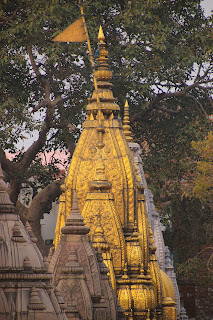Introduction:
The
Hindu month of Sawan arrives, bringing with it a much-needed break and a
delicious feeling of anticipation as the sweltering heat of summer gradually
loses its grip. Sawan, widely considered a holy season, has a unique meaning
for believers and is a time for celebration, reflection, and devotion. Let's tour
the magical month of Sawan, learning about its significance, customs, and the
powerful bond it creates between people and the holy.
The
Arrival of Sawan:
Sawan, also known as
Shravan, occurs in the Hindu calendar's monsoon season, typically from
mid-July to mid-August. It is incredibly significant in Hindu mythology and is
thought to be the month that Lord Shiva, the ultimate God and slayer of evil,
has chosen to bless his followers. The entrance of Sawan creates a
mysterious atmosphere, with rains' pitter-patter resonating like the drums of
the gods.
Kanwar
Yatra:
The
Kanwar Yatra, a journey to holy rivers, particularly the Ganges, is a notable
highlight of the Sawan celebrations. On their shoulders, devotees carrying
'kanwars,' ornately painted bamboo sticks, are frequently dressed in saffron.
These kanwars pour holy water over the revered Shiva Linga in
temples. The Yatra represents dedication, submission, and the cosmic connection
between Shiva and his followers.
Offerings
and Fasting:
During
Sawan, devotees undertake strict fasting. Others prefer to fast on particular
days of the week, while many refrain from consuming non-vegetarian food,
alcohol, and smoking. Such self-control and discipline increase one's
spirituality and inner calm by bringing one closer to the divine.
Merging
with Nature:
Sawan
is a reminder to appreciate the wonders of nature and their innate spiritual
significance. The earth-nourishing monsoon showers are compared to the heavenly
benefits given to worshippers. Devotees are inspired to see the divine in all creation
due to the lush green scenery, the smell of moist ground, and the sparkling
rains on foliage.
Rituals
and Events:
Sawan
is a season of exuberant celebrations and events. Temple visitors participate
in elaborate prayer rituals, devotional singing, and dancing displays. Jhulas,
or intricately adorned swings, are placed in houses and temples, where
worshippers swing merrily to represent the playful demeanor of Lord Krishna and
Radha. These celebrations foster a spirit of enthusiasm, comradery, and
loyalty.
Sawan
and the Universal Message:
In
addition to its religious importance, Sawan also transmits a message relevant
to all ages and demographics. It serves as a reminder of the fundamental
virtues of faith, fidelity, and fortitude. Sawan instructs us to purify our
minds, letting go of negativity and embracing the purity of ideas and deeds,
much as the rains revitalize the ground.
We are reminded of the
enduring connection between humanity and the divine when the lovely month of
Sawan envelops us in its divine embrace. Devotees seek comfort and spiritual development
via fasting, prayer, and reflection to ally with the global forces shaping our
life. Sawan is an homage to the profound harmony between nature and the divine,
a celebration of the benefits of the monsoon, and a call to all of us to dive
more deeply into our spiritual selves. Let's embrace Sawan's tranquility and journey to learn about ourselves and connect with God.
---END---










0 Comments